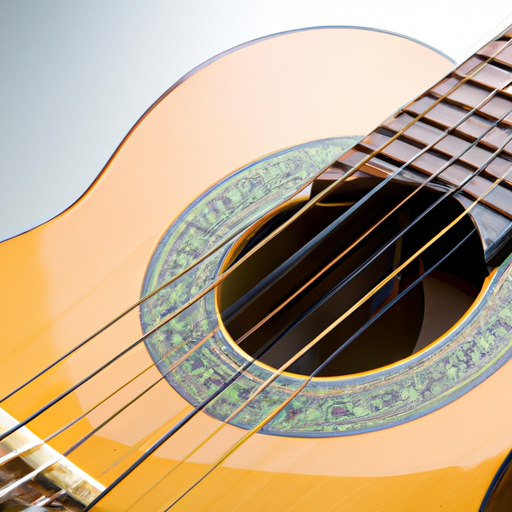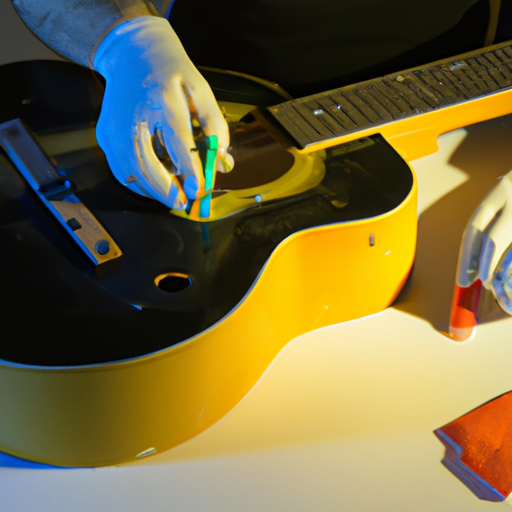
Guitars are not only musical instruments, but they are also investments. As a beginner, you may not yet realize the importance of proper guitar maintenance and care. However, with time, you will come to appreciate that a well-maintained guitar will produce better sound, last longer and save you money in repair costs. In this article, we will provide you with essential guitar maintenance tips to ensure that your guitar stays in good shape.

Guitar maintenance is essential to keep your guitar in optimum condition. A well-maintained guitar has a longer lifespan and produces better sound quality. Additionally, proper maintenance helps you avoid costly repairs and replacements.

Regular guitar maintenance ensures that your guitar stays in top condition. It helps to prevent rust, corrosion, and other wear and tear that can affect the sound quality of your guitar. Proper maintenance also ensures that your guitar retains its value over time, making it easier to resell if you ever decide to upgrade to a better model.
If you're a beginner, proper guitar care is essential to help you learn and grow as a musician. A well-maintained guitar produces better sound quality, making it easier for you to practice and play. Additionally, proper care ensures that your guitar lasts longer, allowing you more time to hone your skills.
To maintain your guitar, you will need a few essential tools, including a soft cloth, a guitar cleaner, a string winder, a set of new strings, a truss rod wrench, and an electronic tuner. These tools are readily available at most music stores and online retailers.
Using the correct tools for guitar maintenance is essential. Proper tools ensure that you don't damage your guitar while attempting to clean or adjust it. Additionally, using the correct tools can make the process of maintaining your guitar more efficient and effective.
Using the essential guitar maintenance tools is relatively straightforward. However, it's essential to follow the instructions carefully to avoid damaging your guitar. For example, when changing strings, remove them one at a time to avoid damaging the guitar's neck or bridge. Similarly, when adjusting the truss rod, do so gradually to avoid over-tightening or damaging the neck.
Cleaning your guitar is essential to keep it in good condition. Dirt, sweat, and oils from your fingers can build up on your guitar, affecting its sound quality. Regular cleaning removes these contaminants, ensuring that your guitar produces clear and crisp sounds.
To clean your guitar, wipe it down with a soft cloth to remove any dust or dirt. Use a guitar cleaner to remove any grime or oils on the surface of your guitar. Be sure to avoid getting any liquid on your guitar's electronics or pickups.
Storing your guitar properly is essential to prevent damage. Always store your guitar in a dry and cool place, away from direct sunlight and extreme temperatures. Additionally, always store your guitar in a case or stand to protect it from accidental falls or impacts.
Tuning your guitar is essential to produce the correct notes and chords. An out-of-tune guitar produces poor sound quality and can be frustrating to play. Proper tuning ensures that your guitar produces the correct pitch and sound quality.
Tuning your guitar by ear takes practice and patience. Use the low E string as a reference point and tune the other strings to match it. Alternatively, you can use an online tuning app or a tuning fork to help you tune by ear.
Electronic tuners are the easiest and most accurate way to tune your guitar. Simply clip the tuner onto the guitar's headstock, pluck a string, and adjust the tuning peg until the tuner reads the correct pitch.
Changing your guitar strings is essential to maintain good sound quality. Dull or rusty strings can affect the guitar's tone and make playing more difficult. Change your guitar strings every three to six months or more often if you play daily.
To change your guitar strings, remove the old strings one at a time, and replace them with the new ones. Be sure to wind the strings correctly and trim any excess string after tuning.
There are many types of guitar strings available, each with a unique tone and sound quality. Experiment with different types of strings to find the ones that produce the sound you prefer.
A truss rod is a metal rod that runs the length of the guitar's neck. It helps to counteract the tension created by the strings, keeping the neck straight and stable. Adjusting the truss rod can help to correct any bowing or buzzing on the fretboard.
You may need to adjust the truss rod if you notice any bowing or buzzing on the fretboard. However, it's essential to be careful when making adjustments to avoid damaging your guitar's neck.
To adjust the truss rod, use a truss rod wrench to turn the nut on the end of the rod. Turn the nut clockwise to tighten the rod and counteract any bowing. Turn the nut counterclockwise to loosen the rod and allow for more bowing.
The guitar bridge is an essential component of the guitar that helps to transfer the strings' vibrations to the guitar's body. Proper maintenance ensures that the bridge remains clean and lubricated, preventing any damage or wear and tear.
To clean and lubricate the guitar bridge, use a soft cloth to wipe away any dirt or grime. Apply a small amount of guitar lubricant or oil to the bridge's moving parts to ensure smooth operation.
Adjusting the guitar bridge may be necessary if you need to alter the guitar's action or intonation. However, it's essential to have a professional do this if you're not experienced in guitar repair.
The guitar's fretboard is where you place your fingers to create notes and chords. Proper maintenance ensures that the fretboard remains clean and free of dirt and grime, allowing for smoother playing.
To clean and oil the fretboard, use a soft cloth to wipe away any dirt or grime. Apply a small amount of fretboard oil or conditioner to the wood to keep it moisturized.
Fret buzz occurs when the strings vibrate against the frets, causing a buzzing sound. To fix fret buzz, adjust the truss rod or bridge height to raise the strings' action slightly.
To prevent damage to your guitar, always handle it with care. Avoid exposing it to extreme temperatures or humidity, and never leave it in direct sunlight. Additionally, always store your guitar in a case or stand to protect it from accidental falls or impacts.
Storing your guitar properly is essential to prevent damage. Always store your guitar in a dry and cool place, away from direct sunlight and extreme temperatures. Additionally, always store your guitar in a case or stand to protect it from accidental falls or impacts.
Common guitar damage includes cracks, scratches, and broken strings. Repairing minor damage is relatively easy and can be done with simple tools. However, larger repairs may require professional help.
In this article, we covered essential guitar maintenance and care tips, including cleaning, tuning, and string changing. We also discussed the importance of using proper tools, storing your guitar correctly, and preventing damage.
Maintaining and caring for your guitar is essential to ensure that it produces the best possible sound quality and lasts for years to come. By following these tips, you can enjoy playing your guitar for a long time.
Remember that proper guitar maintenance takes time and effort, but it's worth it in the end. Take the time to learn how to maintain and care for your guitar, and you'll be rewarded with years of enjoyable playing and great sound quality.
Click here to learn more about renting musical instruments for your next gig!